A high Q terahertz metamaterial absorber using concentric elliptical ring resonators for harmful gas sensing applications
2023-05-06BhargavAppasaniAvireniSrinivasuluCristianRavariu
Bhargav Appasani ,Avireni Srinivasulu ,Cristian Ravariu
a Department of Electronics Engineering,Kalinga Institute of Industrial Technology,Bhubaneswar,India
b Department of Electronics Engineering,K R Mangalam University,Gurgaon,India
c Department of Electronic Devices,Circuits and Architectures,Polytechnic University of Bucharest,Bucharest,Romania
Keywords:Refractive index Plasma frequency Metamaterials Terahertz absorption Q-factor Gas sensing
ABSTRACT A nearly perfect metamaterial absorber is proposed that can find utility in terahertz sensing applications.The design consists of two concentric elliptical ring resonators (ERRs) whose parameters are appropriately set to achieve dual band absorption with near perfect absorption.The first absorption band at 3.62 THz having a Q-factor of 51.7 was caused due to the currents in the outer and inner ERR.The second absorption peak at 3.814 THz having a Q factor of 1411.11 was a consequence of currents flowing across the gap between the two concentric resonators.Furthermore,it is observed that the absorption bands are sensitive to the variation in refractive index of the surrounding medium.The sensitivity’s in the absorption bands are 3 THz/RIU and 3.59 THz/RIU respectively.A sensor is proposed based on this design to detect harmful gases,which is demonstrated for detection of Methane and Chloroform.High Q-factor and high sensitivity of the narrow band makes the design an excellent sensor for detecting variations in the refractive index.
1.Introduction
In the second half of the 19th century there were innumerable contributions to the field of Electromagnetics,the most important of them being the design of materials with negative permeability and permittivity[1,2].These materials,now popularly known as the metamaterials have novel properties and have countless applications [3—5].Metamaterial absorbers (MMAs) are the recent resonant devices that have wide applications in sensing and detection[6—8].Particularly,numerous sensors based on terahertz metamaterial absorbers (TMAs) have been developed [9—13].
A TMA comprises of periodic arrangement of structures called cells.The resonating behaviour displayed by these structures is attributed to metal patterning in the structures,which lowers the plasma frequency[5].The first TMA was reported by T.J.Yen and his colleagues,while working magnetic response of the materials[14].The resonance peaks offered by these structures can shift with change in certain parameter of the environment,thus making them excellent sensors.A biosensor based on ultrathin silicon nitride substrate was presented in Ref.[15]for measuring the thickness of thin films that offered a sensitivity of 4.05×10-2GHz/nm.Another biosensor for DNA detection was developed that offered a frequency shift of 3.6 GHz [16].A polarization insensitive TMA was developed for bio-sensing applications that offered a frequency shift of 275 GHz.TMAs can also be used to detect changes in the refractive index with high sensitivity.A sensor for detecting changes in refractive index was developed in Ref.[17]having sensitivity of 163 GHz/RIU,quality factor (Q factor) of 7.036 and figure of merit (FoM) of 2.67.The Q-factor depends on the narrowness of the resonance band.Designs with high Q-factor and high FoM can act as excellent sensors.Another excellent refractive index sensor was proposed in Ref.[18]that offered a sensitivity of 638 GHz/RIU.The summary of results reported in the literature are shown in Table 1 along with the results obtained using the proposed design.
From the results reported in Table 1,it can be observed that the proposed design has high Q-factor and FOM,indicating its improved sensing capability.The proposed design also offers a peak absorption of 99.3%at 3.62 THz and 99.3%at 3.814 THz.The secondpeak has a narrow absorption line-width of only 0.0027 THz,thus resulting in high Q-factor of 1411.11.Furthermore,the sensitivity offered by the structure was approximately 3.59 THz/RIU and its FoM was 1329.63.

Table 1 Performance of various sensors reported in literature.
The manuscript is structured as follows: the model of the unit cell of the absorber is discussed in the next section.The section also depicts the absorption characteristics offered by the structure.The third section presents the detection capabilities of the proposed design.Furthermore,the choice of the design parameters is justified with the help of suitable parametric analysis.The cause for the appearance of the absorption peaks is ascertained by the means of current distribution plots is also discussed in this section.In the fourth section,a sensor based on the proposed TMA is shown and its ability to detect harmful gases,such as Methane and Chloroform is demonstrated.Finally,the conclusion is given in the fifth section.
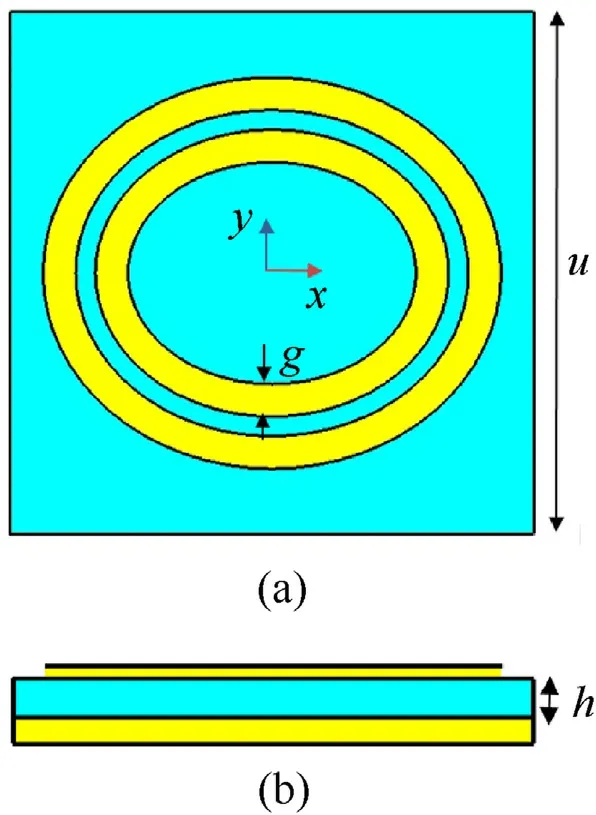
Fig.1.Unit cell structure: (a) Top view;(b) Side view.
2.Unit cell model
The model of the unit cell consists of two concentric elliptical ring resonators (ERRs) as shown in Fig.1.The model comprises of three layers,a 4 μm thick bottom ground plane made up of gold,a dielectric layer at the middle,having thickness h=6 μm and the top layer having two concentric ERRs made up of gold and having thickness of 2 μm.The dielectric constant of the polyimide dielectric spacer is 3(1+i0.06)and the gold’s conductivity is taken as 4.09 × 107S/m.The thickness of the bottom gold layer is taken several times that of the its skin depth to prevent the transmission of the electromagnetic waves.The unit cell is a square patch having length u=80 μm.The outer ERR has a major axis of length a=35 μm,and minor axis of length b=30 μm.The inner ERR has a major axis of length 27 μm and minor axis of length b=22 μm.Both the resonators have a thickness of g=5 μm.
The absorption characteristics can be obtained as a function of the reflection and the transmission coefficients as given by Eq.(1).
whereAis the absorption,s11is the reflection coefficient,s12is the transmission coefficient.The transmission coefficient is negligible and is taken as zero as the transmission of electromagnetic waves is prevented due to the bottom gold plane.
3.Analysis of simulation results
The structure was designed and simulated using the CST Microwave Studio software.Its absorption characteristics are shown in Fig.2.Also shown in the figure are the absorption characteristics for different polarization angles.
From Fig.2 it can be observed that the two absorption bands have center frequencies of 3.62 THz and 3.814 THz respectively.Their peak absorptivity’s are 99.3% and 99.3% respectively.The absorption characteristics of the first band do not shift in frequency even when the polarization angle reach 45°.Beyond 45°,there is a slight shift in the resonance frequency.The resonance peak of the second absorption band does not shift with the change in polarization angle.However,the peak absorption offered by this band reduces with the increase in polarization angle.It can also be observed from Fig.2 that the two absorption bands have full width half maximum (FWHM) of 0.07 THz and 0.0027 THz respectively.The Q-factor is defined as the ratio of the resonance frequency and the FWHM.Thus,the Q-factor in these two bands are 51.7 and 1411.11 respectively.The absorption bands shift with the change in the refractive index of the surrounding environment.The absorption characteristics at different refractive indices are shown in Fig.3.
The absorption peaks shift to the left with the increase in the refractive index of the surrounding medium.Moreover,the peak absorptivity of the second band decreases with the increase in the refractive index of the surrounding medium.The peak absorptivity of the first band is unaffected by the change in the refractive index of the surrounding medium.To further understand the cause of appearance of these two bands,the surface current distribution at the two resonance frequencies is shown in Fig.4.
It can be observed from the surface current distribution plots shown in Fig.4,that the narrow band at 3.814 THz arises due to the currents flowing across the gap between the two concentric ERRs.This coupling between the two resonators exists only for a narrow bandwidth,resulting in a harp peak with high Q-factor.The first band at 3.62 THz is mainly caused due to the current distribution in the outer and inner ERRs.To justify the design parameters a parametric analysis is performed and these plots are shown in Fig.5.
From Fig.5 it can be observed that the absorption peaks are prominent forh=6 μm.Increasing or decreasing the height reduces the peak absorption and the FWHM.Similarly increasing or decreasing the value of u from the chosen value of 80 μm reduces the peak absorptions and the FWHM.However,reducing the value of g improves the peak absorption.This increase is not so significant and so we set the value of g=5 μm.Next,the sensitivity of the sensor is plotted for both the bands in Fig.6.

Fig.2.Absorption characteristics of the proposed design (a) for 0° polarization (b) at different polarization angles.
The sensitivity of the sensor in the first absorption band is found to be 3 THz/RIU and in the second absorption band it is found to be 3.59 THz/RIU.The FoM is defined as the ratio of the sensitivity and the FWHM.Thus,the corresponding FoM’s are 42.9 and 1329.63 respectively.The relationship between the resonance frequency and the refractive index of both the bands are given by the following equations.
wheref1,f2are the resonance frequencies of band 1 and band 2,and η is the refractive index.

Fig.3.The absorption characteristics at different refractive indices.
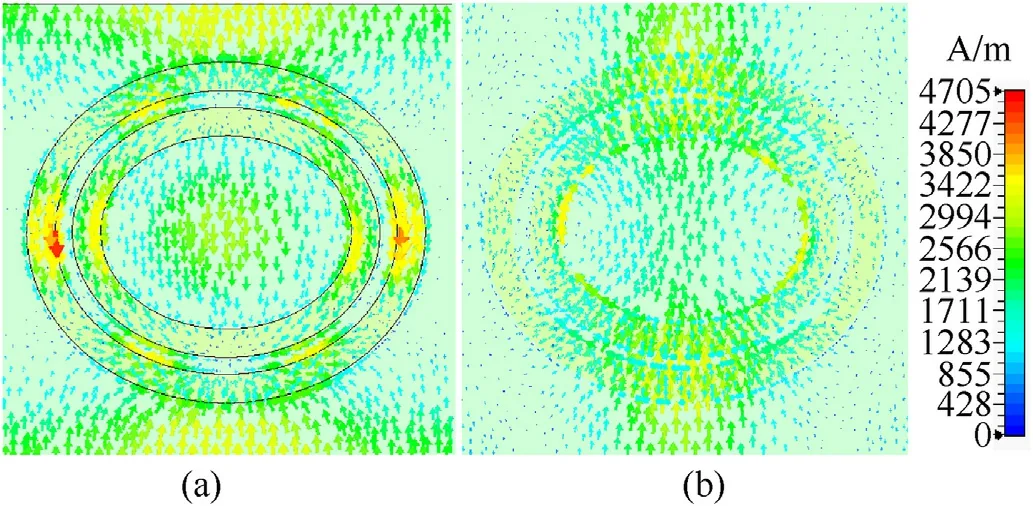
Fig.4.Current distribution at (a) 3.62 THz and (b) 3.814 THz.
4.Application in sensing harmful gases
The second band is more sensitive to the changes in the refractive index and also its resonance peak does not shift with the changes in polarization angle.Thus,this band will be utilized for sensing harmful gases.A sensor based on the proposed TMA,that can detect harmful gases is shown in Fig.7.
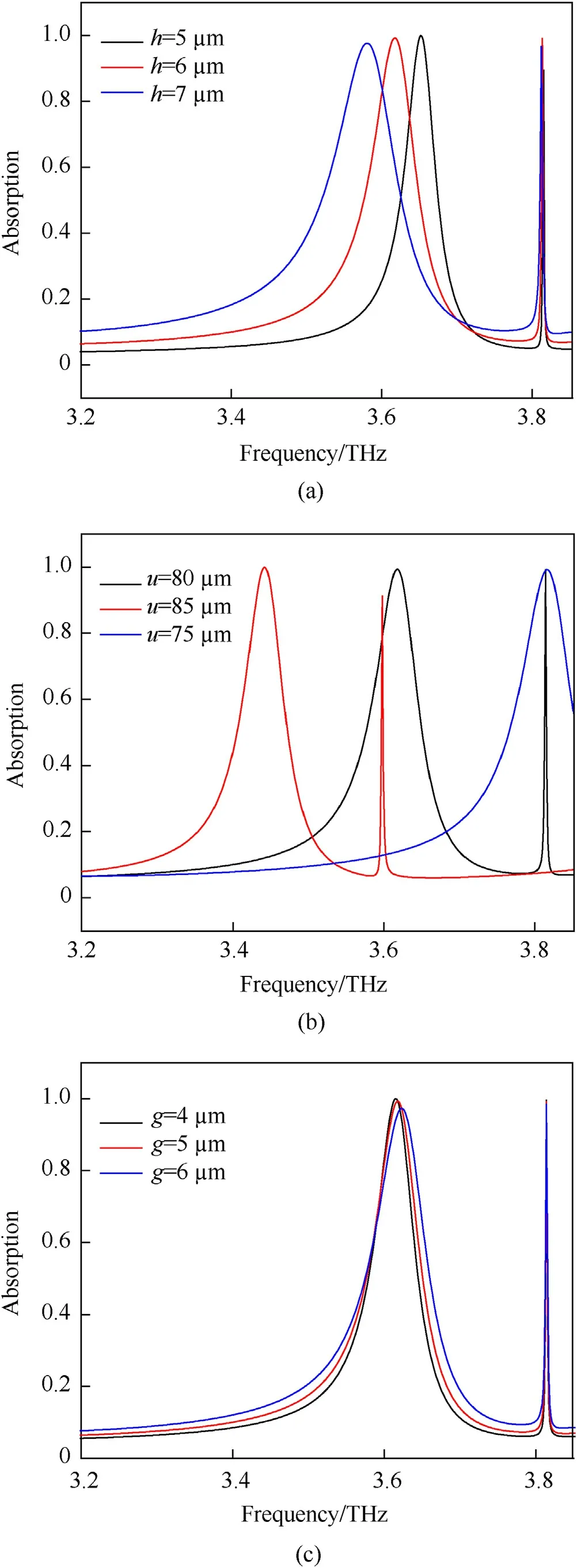
Fig.5.Parametric analysis for (a) h,(b) u,(c) g.
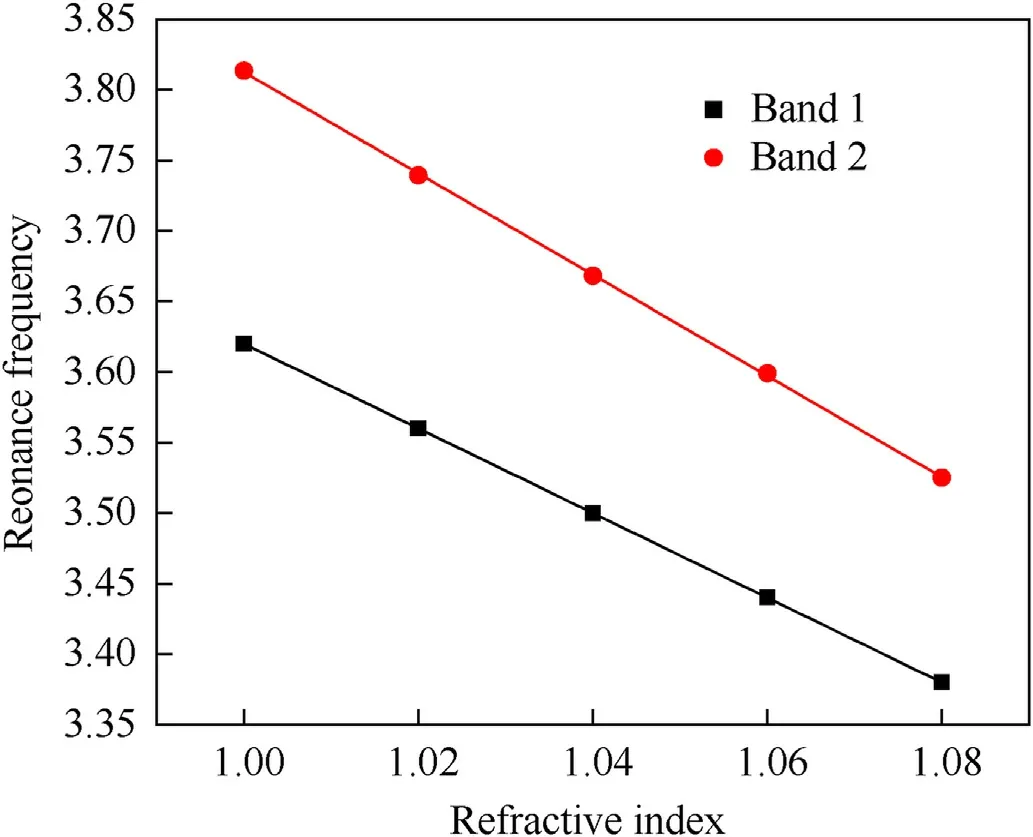
Fig.6.Sensitivities of the two absorption bands.
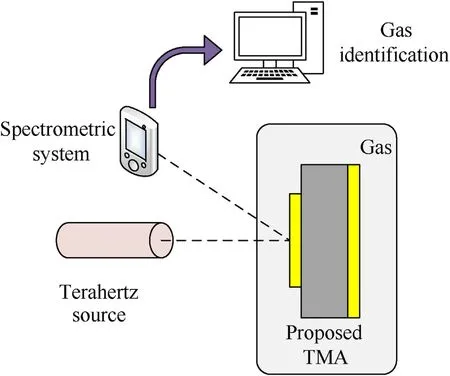
Fig.7.Harmful gas detection using the proposed TMA.
The terahertz source generates the terahertz plane wave,which is incident on the proposed sensor.The reflected electromagnetic wave is detected and the absorption spectrum is obtained by the spectrometric system.The absorption spectrum is analysed by a software in a computer that predicts the refractive index of the gas based on the resonance peaks in the spectrum and Eq.(3).Two harmful gases,Methane and Chloroform,having refractive indices are η=1.000444 and η=1.0014,respectively,were taken to demonstrate the ability of this sensor to detect these gases.Methane is a highly inflammable gas and its detection is crucial in coal mines.Chloroform inhalation is also injurious to health and it affects the central nervous system of human body,eventually leading to unconsciousness.Excess intake of chloroform can also cause hepatitis in some cases.Hence,the detection of these harmful gases is very important.The absorption spectrum of Methane and Chloroform obtained using the proposed TMA based sensor is shown in Fig.8.
The resonance peak for Methane is observed at 3.81163 THz and that for Chloroform is at 3.80869 THz.Based on Eq.(3),the predicted refractive index of Methane is 1.000245,and that of Chloroform is 1.00110.Thus,the sensor can predict the refractive index of harmful gases effectively.
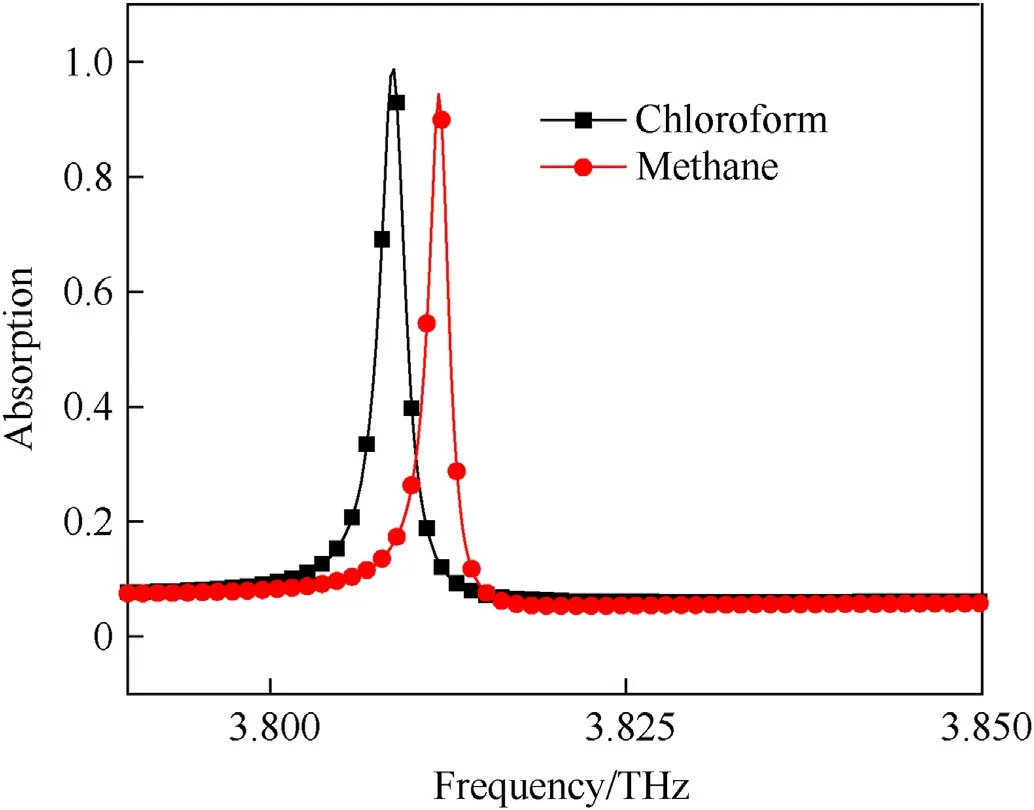
Fig.8.Absorption spectrum of Methane and Chloroform.
5.Conclusions
TMAs have numerous sensing applications.The shift in the absorption peaks of the TMA with respective to the change in the refractive index of the surrounding medium makes it an excellent refractive index sensor.A high Q-factor refractive index sensor has been designed,which exploits the coupling between two concentric ERRs to achieve high sensitivity.Due to the high resonance frequency of 3.814 THz and a narrow FWHM of 0.0027 THz,the Qfactor achieved is significantly higher than the existing sensors.Moreover,its peak absorption is almost unity(99.3%)making it an excellent absorber of THz radiation.Also,its sensitivity is 3.59 THz/RIU and its FoM is 1329.63.A sensor based on the proposed TMA has been demonstrated for sensing harmful gases,such as Methane and Chloroform.This high Q-factor and ultra-sensitive sensor can be used for detecting the change in the refractive index of different media.
Authors’ contributions
The authors have conceived the idea,designed and simulated the structure,obtained the results,and has written the manuscript.
Consent to participate
The authors gives his consent to participate.
Consent to publish
The authors gives his consent to publish.
Declaration of competing interest
The authors declare that they have no known competing financial interests or personal relationships that could have appeared to influence the work reported in this paper.
杂志排行
Defence Technology的其它文章
- Dual Attribute Adversarial Camouflage toward camouflaged object detection
- A bi-population immune algorithm for weapon transportation support scheduling problem with pickup and delivery on aircraft carrier deck
- One-step green method to prepare progressive burning gun propellant through gradient denitration strategy
- Benchmark calculations and error cancelations for bond dissociation enthalpies of X—NO2
- GO/HTPB composite liner for anti-migration of small molecules
- Resilient tightly coupled INS/UWB integration method for indoor UAV navigation under challenging scenarios
